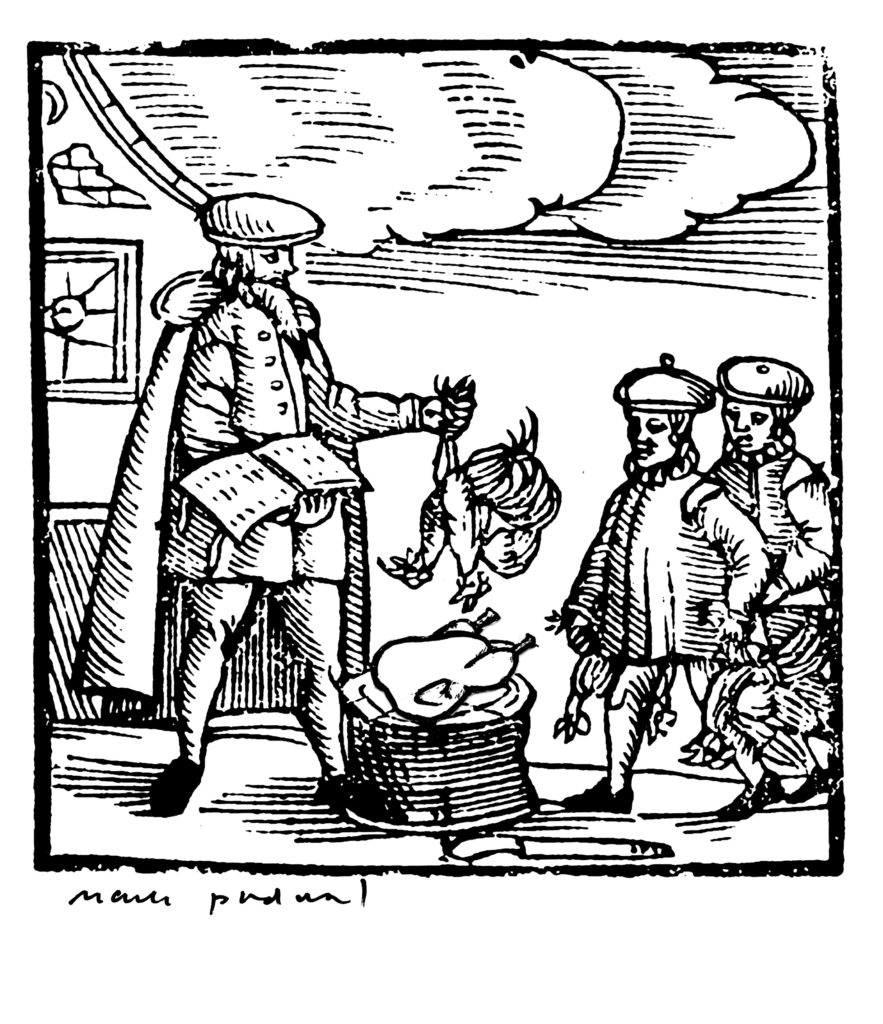Kapparot
Mark Podwal (b. 1945)
Digitial archival pigment print on paper
7 7/16 x 7 9/16″
USA, 2020
© Mark Podwal
Kapparot, which literally means “atonements,” is the custom in which a person’s sins are symbolically transferred to a fowl. The ceremony is performed on the day before Yom Kippur (Day of Atonement) while some also perform the ritual on the day before Rosh Hashanah (New Year) or on Hoshana Rabbah (seventh day of the festival of Sukkot). Psalms are recited and then a rooster for a male or a hen for a female is swung counterclockwise around the head three times while reciting: “This is my substitute, this is my atonement. This rooster (hen) will go to its death, but I will find a good, long and pleasant life of peace.” After the ceremony, the chicken is immediately slaughtered according to the laws of kashrut and the intestines are tossed for the birds to eat. Rabbi Simeon son of Zemach Duran (14th to 15th century) wrote: “The reason why people make it a custom to throw away the intestines…is to show compassion to the birds. For it is fitting to show compassion to dumb creatures, that we in turn may be shown compassion by heaven.” Kapparot is first referred to by Amran Gaon of Babylonia in 670 CE. Ninth-century scholars explained that since the Hebrew word gever means both “man” and “rooster,” a rooster might serve as a substitute for the former. Kapparot echoes the biblical expiation ritual of the scapegoat but comes too close to pagan superstition in believing that one may substitute the death of an animal for one’s own life. Thus, many rabbis opposed kapparot such as Joseph Karo who called it a “stupid custom.” On the other hand, the prominent Polish Ashkenazi Rabbi Moses Isserles made kapparot compulsory.

